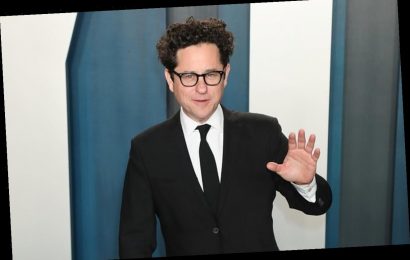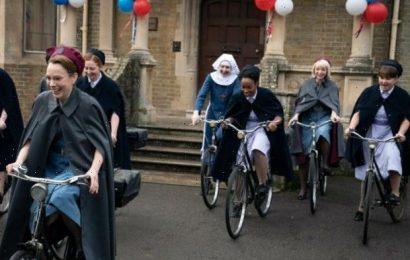In the lead-up to releasing “Ghostbusters: Afterlife,” Sony has played it fairly tight-lipped about what exactly this movie might be: Is it a prequel, a sequel or some kind of spinoff? Pretty much any discussion of the answer will come as a spoiler to those who like surprises, so be warned that this review is not intended as a marketing tool for the studio (those seeking coy teasers are better off watching the trailers), but as a critique of what this unnecessary but enjoyable movie actually delivers.
The good news for “Ghostbusters” fans is that “Afterlife” does nothing to tarnish what has come before, overseen as it is by Jason Reitman, carrying on the legacy of his father (and “Ghostbusters” director) Ivan, who played an important behind-the-scenes role in shaping this 21st-century update. The franchise has made the family rich, spawning a sequel, an animated series, a comic book line and an ill-fated 2016 reboot. After those wildly uneven expansions, the new movie aims to bring things back around, serving to deepen the mythology of the 1984 blockbuster by focusing on the estranged grandkids of one of the original Ghostbusters, who are forced to move to middle-of-nowhere Summerville, Okla., after the old coot kicks the bucket.
Mom (Carrie Coon) is still sore about being abandoned many years earlier, but intends to sort through the mess her dad left behind, hoping 15-year-old Trevor (“Stranger Things” star Finn Wolfhard) and science prodigy Phoebe (terrific young actor Mckenna Grace of “Troop Zero” fame) can adjust. Turns out, the kids take it better, adjusting almost instantly. Trevor gets a job at the local burger joint — a ploy to get closer to crush Lucky (Celeste O’Connor) — while Phoebe enrolls in summer school, taught by amateur seismologist Gary Grooberson (Paul Rudd). There, she makes friends with a kid (Logan Kim) who calls himself Podcast for obvious reasons (he insists on documenting his life, regardless of whether anyone cares).
It takes nearly an hour (51 minutes, to be exact) for any ghosts to appear, although the movie does tease their presence much earlier with a familiar sight: an ominous, swirling cloud positioned directly above the town’s long-abandoned mine. Now here’s the part where I take a moment to admit that I don’t care for the original “Ghostbusters.” I like the song, the costumes, the car and the cartoony no-ghosts logo, but find myself exhausted by the gobbledygook pseudoscience and bizarro end-of-the-world finale. What’s more, I blame “Ghostbusters” for decades of lazy blockbuster imitations (including “Men in Black” and more than a few Marvel movies) in which we’re meant to fear the worst when some apocalyptic weather pattern swirls into formation, sending a glowing beam of purple light down from the heavens. (Only “Independence Day” has used that technique well.) And yet, here we go again.
After the movie’s leisurely, kid-centric buildup, “Ghostbusters: Afterlife” eventually reveals itself to be a rural, 21st-century rematch of what has come before: what remains of the Ghostbusters — both old and new members — reassembled to thwart Gozer’s return. The movie essentially disowns the gender-swapped reboot, though that movie (which featured cameo appearances by five of the original cast) gives a pretty good idea of who’s available and willing to reenlist.
Whereas Dan Aykroyd, Bill Murray and Ernie Hudson projected too much smarmy, oversexed swagger the first time around, it’s fun to see them looking a little more rickety and vulnerable in their old age, while still holding their own against Terror Dogs and whatever other demons are trying to break through from the other side. Special effects have advanced light-years since 1984, and yet Reitman (the younger) makes the respectable decision to stick to the look of the original film, opting to use models and practical tricks where possible, but not ruling out CG where necessary.
In place of Slimer, we get a corpulent computer-animated ghost named Muncher, who gobbles metal and then sprays shrapnel on anyone who tries to wrangle him. And the Stay-Puft Marshmallow Man returns in a slightly different (adorably self-destructive) form. Watching one of these gremlins cozy up between a chocolate-bar blanket and a graham-cracker bed has gotta be one of the year’s best sight gags. And considering how randy the earlier film was, it’s nice to see a much doofier romance blooming between Coon’s and Rudd’s characters (the “Ant-Man” star continues to prove himself a comedy MVP, earning half the movie’s big laughs).
Some years back, there was talk of a possible “Ghostbusters 3,” but then Harold Ramis died, leaving the team incomplete. “Afterlife” finds an emotional way to honor his legacy, using a combination of technology and creative screenwriting to make his character felt in the run-up to the movie’s supernatural battle royal. In retrospect, there was only one right answer, and “Afterlife” nails it. But shifting the action from the big city to a “dirt farm” in Oklahoma seriously undercuts the feeling that Gozer’s return could spell the end for humanity. It probably would have been just as effective if said demon — liberated like some kind of evil genie from its decades of captivity — were content to seek revenge on the Big Apple ghost-catchers who locked it up before.
Between “Stranger Things” and the upcoming “Top Gun” sequel, ’80s pop culture nostalgia seems to be at an all-time high, but “Afterlife” tries not to lean too heavily on that sentiment alone. It’s designed to work for those who’ve never seen any of the franchise’s earlier incarnations, and though the film adopts an unmistakably Amblin-esque vibe — there’s an obvious “what if the Goonies were Ghostbusters?” sensibility at work here, reinforced by Spielbergian magic-hour shots of kids assembling around a Devils Tower-shaped rock formation — you needn’t have grown up on such movies to appreciate how they elevate adolescent rejects to hero status.
Source: Read Full Article







